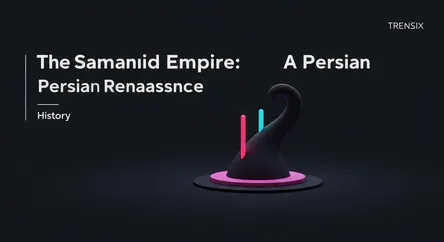History
The Samanid Empire: A Persian Renaissance

Discover the Samanid Empire, a Persian dynasty that championed a cultural and scientific golden age in Central Asia from the 9th to the 10th century.
What is it?
The Samanid Empire (819–999 CE) was a powerful Persianate Sunni Muslim state centered in Greater Khorasan and Transoxiana, areas covering modern-day northeastern Iran and much of Central Asia. Founded by four brothers descended from Saman Khuda, a landowner of Iranian origin, it was the first native Persian dynasty to arise in the region after the Arab conquest. With its capitals in Samarkand and later Bukhara, the empire became a major center of trade, controlling key routes of the Silk Road and minting high-quality silver coins that were widely circulated.
Why is it trending?
The Samanids are historically significant for sparking the "Persian Renaissance" or "Iranian Intermezzo." They actively revived Persian language and culture, making it the official language of the court and patronizing seminal poets like Rudaki and Ferdowsi. This period saw a flourishing of arts, science, and literature, attracting renowned scholars like the physician and philosopher Avicenna (Ibn Sina). The Samanids are also known for their distinctive slip-painted pottery and innovative brick architecture, such as the Ismail Samani mausoleum in Bukhara, which continue to be studied and admired.
How does it affect people?
The legacy of the Samanids is profound, particularly in Central Asia. Modern Tajiks often view the Samanid era as a cultural golden age, and the national currency of Tajikistan is named the "somoni" in their honor. By championing the New Persian language, they laid the foundation for its spread and development, rooting it deeply in Central Asia. Their patronage of science and philosophy contributed significantly to the intellectual vibrancy of the Islamic Golden Age, with figures like Avicenna influencing thought for centuries. The cultural and political framework they established had a lasting impact on the formation of Turko-Persian traditions.